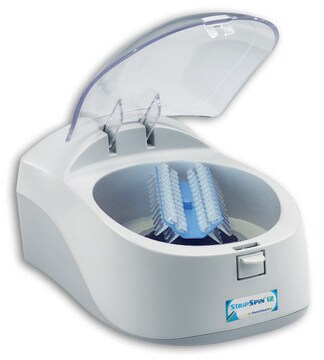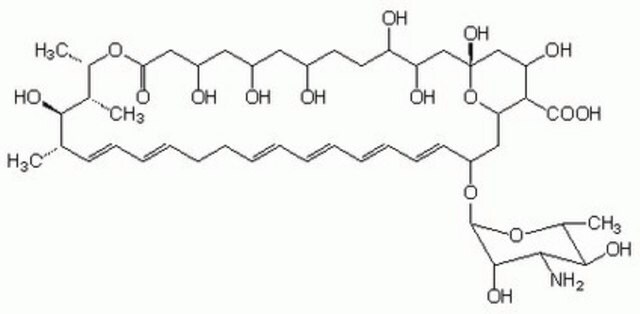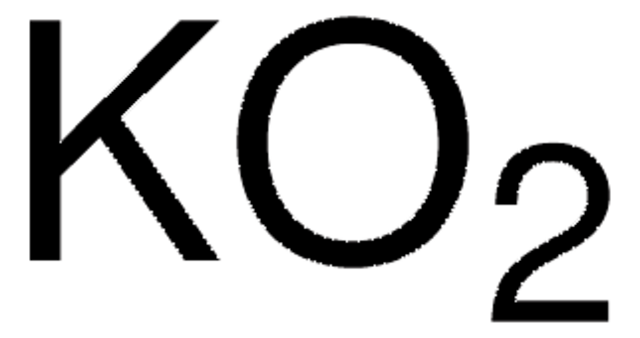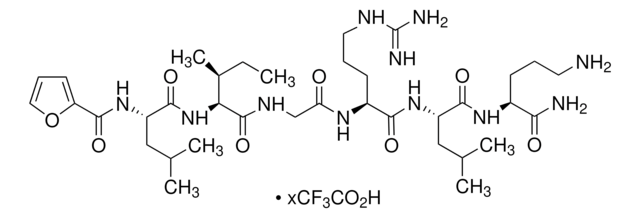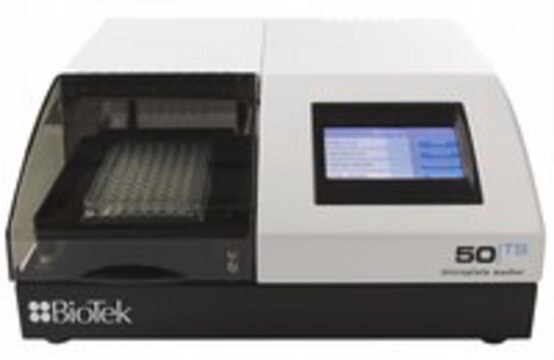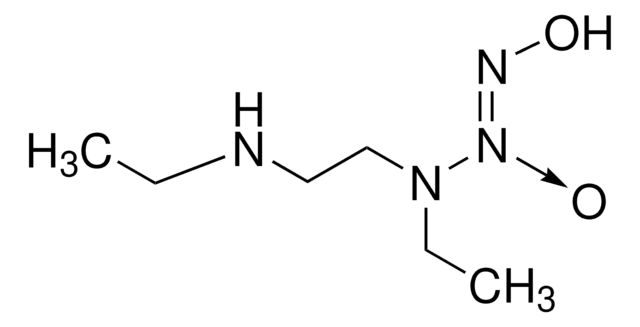SRP8051
CD152 (human): FC (human) (non-lytic)
recombinant, expressed in CHO cells, ≥98% (SDS-PAGE)
Synonym(e):
CTLA-4, Cytotoxic T-lymphocyte-associated antigen 4, Hepatitis A virus cellular receptor 2
About This Item
Empfohlene Produkte
Biologische Quelle
human
Rekombinant
expressed in CHO cells
Assay
≥98% (SDS-PAGE)
Form
lyophilized
Mol-Gew.
monomer 39 kDa by calculation
Verpackung
pkg of 100 μg
Verunreinigungen
<0.06 EU/μg endotoxin, tested
Farbe
white
UniProt-Hinterlegungsnummer
Versandbedingung
wet ice
Lagertemp.
−20°C
Angaben zum Gen
human ... CTLA4(1493)
Allgemeine Beschreibung
CD152 and CD28 are both expressed on the cell surface as homodimers or as monomers. CD152 was originally identified as a gene that was specifically expressed by cytotoxic T lymphocytes. However, CD152 transcripts have since been found in both Th1 and Th2, and CD4+ and CD8+ T cell clones. Whereas, CD28 expression is constitutive on the surfaces of 95% of CD4+ T cells and 50% of CD8+ T cells and is down regulated upon T cell activation, CD152 expression is upregulated rapidly following T cell activation and peaks approximately 24 hours following activation. Although both CD152 and CD28 can bind to the same ligands, CD152 binds to B71 and B72 with 20-100-fold higher affinity than CD28.
Biochem./physiol. Wirkung
Physikalische Form
Rekonstituierung
Sonstige Hinweise
Lagerklassenschlüssel
10 - Combustible liquids
WGK
WGK 2
Flammpunkt (°F)
Not applicable
Flammpunkt (°C)
Not applicable
Hier finden Sie alle aktuellen Versionen:
Analysenzertifikate (COA)
Die passende Version wird nicht angezeigt?
Wenn Sie eine bestimmte Version benötigen, können Sie anhand der Lot- oder Chargennummer nach einem spezifischen Zertifikat suchen.
Besitzen Sie dieses Produkt bereits?
In der Dokumentenbibliothek finden Sie die Dokumentation zu den Produkten, die Sie kürzlich erworben haben.
Unser Team von Wissenschaftlern verfügt über Erfahrung in allen Forschungsbereichen einschließlich Life Science, Materialwissenschaften, chemischer Synthese, Chromatographie, Analytik und vielen mehr..
Setzen Sie sich mit dem technischen Dienst in Verbindung.